International Relations: March 2024 Current Affairs | General Test Preparation for CUET UG - CUET Commerce PDF Download
| Table of contents |

|
| Order of the Druk Gyalpo |

|
| India’s Push for Security Council Reform: The G4 Model |

|
| India Bhutan Relations |

|
| India Sri Lanka Relations |

|
| Nordic-Baltic Cooperation |

|
Order of the Druk Gyalpo

Why in News?
- Prime Minister of India Honored in Bhutan: During his recent two-day State visit to Bhutan, the Prime Minister of India was bestowed with Bhutan’s highest civilian award, the ‘Order of the Druk Gyalpo’, marking the first time a foreign Head of Government has received this honor.
- Bilateral Agreements: India and Bhutan exchanged multiple Memoranda of Understanding (MoUs) and signed agreements covering various sectors such as energy, trade, digital connectivity, space, and agriculture. Notably, they finalized an MoU for establishing rail links between the two nations.
What is the ‘Order of the Druk Gyalpo’ Award?
- Overview: The 'Order of the Druk Gyalpo' represents Bhutan’s most prestigious civilian recognition, reserved for individuals who have made exceptional contributions to society, embodying values like service, integrity, and leadership.
- Significance for Indian PM: The Indian Prime Minister's selection for this award underscores the robust bilateral relations between India and Bhutan, highlighting his leadership qualities aligned with Bhutan’s national vision. His endeavors towards technological advancement, environmental protection, and renewable energy have been particularly noted.
Key Pacts Signed by India and Bhutan
- Rail Links Establishment: Agreements were finalized for the establishment of rail links including the Kokrajhar-Gelephu and Banarhat-Samtse routes.
- Petroleum Supply Agreement: An agreement facilitated the general supply of petroleum, oil, and lubricants from India to Bhutan through agreed entry/exit points.
- Recognition of BFDA: An agreement was reached for the recognition of Bhutan Food and Drug Authority (BFDA) by the Food Safety and Standards Authority of India (FSSAI), aiming to ease business operations and reduce compliance costs.
- Energy Efficiency Cooperation: An MoU aimed at enhancing energy efficiency in Bhutan, focusing on measures such as promoting energy-efficient appliances and institutionalizing training for energy auditors.
- Medicinal Products Regulation: Cooperation was enhanced through an MoU on pharmacopoeia, vigilance, and testing of medicinal products, facilitating the acceptance of Indian Pharmacopoeia by Bhutan and the supply of affordable generic medicines.
- Space Cooperation Plan: A Joint Plan of Action (JPOA) was established for furthering space cooperation through exchange programs and training.
- Digital Connectivity Renewal: Both countries renewed the MoU on Peering Arrangement between the National Knowledge Network of India (NKN) and the Druk Research And Education Network of Bhutan, aimed at enhancing digital connectivity.
Implications of Indian PM’s Visit to Bhutan at a Time of Regional Challenges
- Bilateral Strength Reinforcement: The visit reaffirms India's commitment to strengthening bilateral ties with Bhutan amidst regional uncertainties, demonstrated by India’s increased support for Bhutan’s Five Year Plan.
- Counterbalancing Chinese Influence: Against China's growing engagement with Bhutan, India’s visit aims to reinforce its presence and influence in the region, supporting Bhutan's development and security interests.
- Strategic Cooperation: Discussions included strategic cooperation focusing on defense and security to address common regional challenges, contributing to stability.
- Economic Partnership Promotion: Emphasis was placed on promoting economic partnerships through initiatives to boost trade, investment, and infrastructure development.
- Addressing Security Concerns: The visit addressed regional security concerns such as cross-border terrorism, stressing cooperation among neighboring countries for peace and stability.
Way Forward
- Solidarity Emphasis: Both nations should emphasize their unbreakable ties, presenting a united front amidst external challenges to preserve their relationship’s permanence.
- Support for Bhutan: India should reaffirm its support for Bhutan’s interests, particularly in boundary talks with China, ensuring sovereignty and territorial integrity.
- Enhanced Communication: Strengthening communication and coordination between diplomatic and security establishments of both countries is vital, including intelligence sharing and joint strategy formulation to address common challenges.
India’s Push for Security Council Reform: The G4 Model
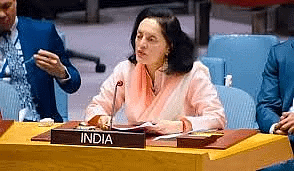
Why in News?
India, as part of the G4 nations, has submitted a comprehensive proposal during the Intergovernmental Negotiations on Security Council Reform at the United Nations. This proposal outlines a detailed framework that advocates for the inclusion of new permanent members in the Security Council, elected through democratic processes by the UN General Assembly. Notably, the proposal demonstrates a willingness to engage in discussions regarding the sensitive issue of veto powers. Formed in 2004, the G4 alliance, comprising Brazil, Germany, India, and Japan, has consistently advocated for reforms within the Security Council.
What are the Key Features of the G4 Proposed Model?
- Addressing Under-representation: The model underscores the significant under-representation and absence of key regions within the current composition of the Council, which undermines its legitimacy and efficiency.
- Membership Expansion: The G4 model proposes an expansion of the Security Council's membership from the existing 15 to 25-26 members. This enlargement includes the addition of 6 permanent members and 4 or 5 non-permanent members. The suggested permanent members comprise two from African states, two from Asia Pacific states, one from Latin American and Caribbean states, and one from Western European and Other states.
- Flexibility on Veto: Diverging from the current setup where only the five permanent members possess veto powers, the G4 model offers flexibility concerning the veto. New permanent members would abstain from exercising the veto until a decision is reached during a review process, showcasing a readiness for constructive negotiations.
- Democratic and Inclusive Election: The proposal emphasizes that the selection of member states for the new permanent seats will occur through a democratic and inclusive election conducted by the UN General Assembly.
What is the United Nations Security Council?
- The United Nations Security Council, established under the UN Charter in 1945, constitutes one of the UN's six principal organs.
- Comprising 15 members, it includes 5 permanent members (P5) and 10 non-permanent members elected for two-year terms.
- The permanent members are the United States, Russian Federation, France, China, and the United Kingdom.
- According to Oppenheim's International Law : United Nations, "Permanent membership in the Security Council was granted to five states based on their importance in the aftermath of World War II."
- India's participation in the Security Council has been as a non-permanent member during the periods of 1950-51, 1967-68, 1972-73, 1977-78, 1984-85, 1991-92, 2011-12, and 2021-22.
Why does the UN Security Council Need to be Reformed?
Representation and Legitimacy:
- The Security Council holds a pivotal role in peacekeeping and conflict resolution, issuing binding decisions affecting all member states.
- To ensure universal respect and implementation of these decisions, the Council requires adequate authority and legitimacy, necessitating representation reflecting the current global dynamics.
Outdated Composition:
- The Council's current composition, established based on the geopolitical landscape of 1945 and marginally expanded in 1963/65, no longer accurately mirrors today's world stage.
- With 142 new countries joining the UN since its inception, regions like Africa, Asia, Latin America, and the Caribbean lack sufficient representation, warranting adjustments to the Council's structure.
Recognition of Contributions:
- The UN Charter acknowledges that nations significantly contributing to the organization deserve a role in the Security Council.
- This acknowledgment supports the candidacy of countries such as India, Germany, and Japan for new permanent seats, reflecting their meaningful contributions to the UN's objectives.
Risk of Alternative Decision-Making Forums:
- Without reform, there's a risk of decision-making processes shifting to alternative forums, potentially undermining the Council's effectiveness.
- Competition for influence among such forums is counterproductive and not in the collective interest of member states.
Misuse of Veto Power:
- The exercise of veto power has consistently faced criticism from numerous experts and a majority of states, depicting it as a mechanism favoring a "self-selected group of privileged nations" lacking democratic principles.
- Such utilization of veto power hampers the Council's ability to make essential decisions if they conflict with the interests of any of the P-5 members, which is considered inappropriate in today's global security context.
What is the Procedure of UN Security Council Reforms?
- UN Security Council reform requires an amendment to the Charter of the United Nations. The relevant procedure as set out in Article 108 involves a two‑stage process:
- First Stage: The General Assembly, where each of the 193 member states holds one vote, must endorse the reform with a two-thirds majority, equivalent to at least 128 states.
- This stage does not grant the right of veto, as per Article 27 of the Charter.
- Second Stage: Upon approval in the first stage, the United Nations Charter, considered an international treaty, undergoes amendment.
- This amended Charter requires ratification by at least two-thirds of the member states, including all five permanent Security Council members, adhering to their respective national procedures.
- In this stage, the ratification process can be influenced by the parliaments of the permanent members, potentially affecting the entry into force of the amended Charter.
Way Forward
- Engagement and Consensus Building: Fostering inclusive dialogues and consultations among member states, particularly focusing on the perspectives of underrepresented regions like Africa, Asia, Latin America, and the Caribbean.
- Seek common ground and build consensus on the principles and objectives of Security Council reform, emphasising the importance of representation, legitimacy, and effectiveness.
- Amending the UN Charter: Encourage cooperation and coordination among all stakeholders, including the five permanent members, to facilitate the ratification process and ensure the amended Charter reflects contemporary global realities.
- Addressing Veto Power: Exploring avenues for reforming the use of veto power within the Security Council, considering proposals that balance the need for decisive action with concerns about fairness and inclusivity.
- Encouraging transparency and accountability in the exercise of veto power, ensuring that it aligns with the Council's mandate to maintain international peace and security.
- Strengthening Council Effectiveness: Enhancing the Council's capacity to respond swiftly and effectively to emerging global challenges, including conflicts, humanitarian crises, and threats to international security.
- Promoting cooperation and coordination with other UN bodies, regional organisations, and relevant stakeholders to leverage expertise and resources for peacekeeping and conflict resolution efforts.
India Bhutan Relations
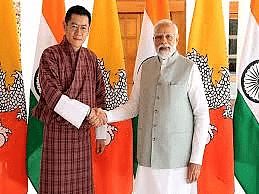
Why in News?
Bhutan’s Prime Minister recently made a visit to India, during which comprehensive discussions were held between the two countries. Additionally, a series of agreements were signed between India and Bhutan.
- The strong and friendly relationship between India and Bhutan is built on trust, goodwill, and common values, which are evident across various levels of engagement. This longstanding friendship forms the foundation for mutual prosperity and regional stability in South Asia.
What are the Key Highlights of the India-Bhutan Bilateral Talks?
- Petroleum Agreement: India and Bhutan have inked a deal ensuring a steady supply of petroleum products from India to Bhutan, aiming to boost economic cooperation and growth in the hydrocarbon sector.
- Food Safety Collaboration: Bhutan's Food and Drug Authority and India's Food Safety and Standards Authority (FSSAI) have collaborated to strengthen food safety measures, facilitating trade by ensuring adherence to standards and reducing compliance expenses.
- Energy Efficiency and Conservation: Both nations have signed a Memorandum of Understanding (MoU) on energy efficiency and conservation, affirming their dedication to sustainable development. India will aid Bhutan in improving household energy efficiency, promoting energy-efficient appliances, and establishing standards and labeling schemes.
- Border Dispute Resolution: The visit of the Bhutanese Prime Minister aligns with ongoing discussions between Bhutan and China to resolve their border dispute, particularly in the Doklam region. The agreement, reached in August 2023 and formally signed in October 2021, followed a conflict between India and China sparked by China's attempt to construct a road in Doklam in 2017.
- Bhutan’s Regional Economic Hub in Gelephu: Bhutan's initiative to develop a regional economic hub in Gelephu, known as the "Gelephu Mindfulness City" (GMC), signifies a significant stride towards regional development and connectivity. Unlike conventional financial hubs, GMC prioritizes sustainable growth, focusing on non-polluting industries such as IT, education, hospitality, and healthcare. Strategically positioned at the junction of India's "Act East" policy and emerging connectivity endeavors in Southeast Asia and the Indo-Pacific, Gelephu plays a crucial role in promoting economic integration and trade facilitation.
What is the Significance of Bhutan for India?
Strategic Importance:
- Bhutan, positioned between India and China, serves as a crucial buffer state, enhancing India's security interests.
- India's support in defense, infrastructure, and communication has bolstered Bhutan's sovereignty and territorial integrity.
- Assistance from India has fortified Bhutan's border infrastructure, including roads and bridges, reinforcing its defense capabilities and territorial integrity.
- During the 2017 Doklam standoff, Bhutan played a pivotal role by permitting Indian troops to enter its territory, countering Chinese incursions.
Economic Importance:
- India stands as Bhutan's primary trading partner and key export destination.
- Bhutan's hydropower potential constitutes a significant revenue source, with India playing a pivotal role in its development.
Cultural Importance:
- Despite Bhutan's Buddhist majority, India's vibrant Buddhist community, alongside its Hindu populace, fosters strong cultural bonds.
- India's support in preserving Bhutan's cultural heritage is evident, with many Bhutanese students pursuing higher education in India.
Environmental Importance:
- Bhutan's commitment to carbon neutrality finds support from India, with assistance spanning renewable energy, forest conservation, and sustainable tourism initiatives.
What are the Challenges in the India-Bhutan Relations?
China's Growing Influence:
- China's increasing presence in Bhutan, particularly along the disputed border between Bhutan and China, has raised concerns in India. India has been Bhutan's closest ally and has played a key role in protecting Bhutan's sovereignty and security.
- China and Bhutan have not established diplomatic relations yet, but have maintained friendly exchanges.
Border Disputes:
- India and Bhutan share a 699 km long border, which has been largely peaceful.
- However, there have been some incidents of border incursions by Chinese forces in recent years.
- The Doklam standoff in 2017 was a major flashpoint in the India-China-Bhutan tri-junction. Any escalation of such disputes could strain India-Bhutan relations.
Hydropower Projects:
- Bhutan's hydropower sector is a key pillar of its economy, and India has been a major partner in its development.
- However, there have been concerns in Bhutan over the terms of some of the hydropower projects, which have been seen as too favourable to India.
- This has led to some public opposition in Bhutan to Indian involvement in the sector.
Trade Issues:
- India is Bhutan's largest trading partner, accounting for over 80% of Bhutan's total imports and exports. However, there have been some concerns in Bhutan over the trade imbalance, with Bhutan importing more from India than it exports.
- Bhutan has been seeking greater access to the Indian market for its products, which could help to reduce the Trade Deficit.
Way Forward
- India can help Bhutan to boost its economy by investing in infrastructure development, tourism, and other sectors. This will not only help Bhutan to become self-reliant but also create employment opportunities for its people.
- India and Bhutan can promote cultural exchange programs to foster greater understanding and appreciation of each other's culture, art, music, and literature.
- A visa-free movement of peoples from both countries can strengthen sub-regional cooperation.
- India and Bhutan can strengthen their strategic cooperation to address shared security concerns. They can work together to combat terrorism, drug trafficking, and other transnational crimes.
India Sri Lanka Relations
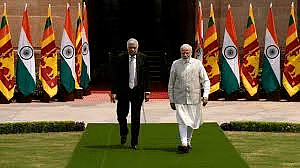
Why in News?
Recently, Sri Lanka Sustainable Energy Authority and Indian company U-Solar Clean Energy Solutions have signed a contract for building “Hybrid Renewable Energy Systems” in Delft or Neduntheevu, Nainativu and Analaitivu islands off the Jaffna peninsula in Sri Lanka.
- The project is supported through grant assistance of USD 11 million grant from the Government of India.
- The Sri Lankan Cabinet earlier cleared Sinosoar-Etechwin Joint Venture in China, a project from China, to execute renewable energy projects in these three islands in Sri Lanka, which now has been replaced by India.
What is the Hybrid Renewable Energy System Project of Sri Lanka?
About:
- It involves the construction of hybrid renewable energy systems, combining various forms of energy including solar, wind, battery power, and standby diesel power systems.
- This initiative is part of India's broader support for energy projects in Sri Lanka, particularly in the northern and eastern regions.
- The National Thermal Power Corporation and the Adani Group are also involved in other renewable energy projects in different parts of Sri Lanka.
Capacity:
- The project aims to address the energy needs of the inhabitants of the three islands. It includes 530 kW of wind power, 1,700 kW of solar power, and 2,400 kWh of battery power and 2,500 kW of stand by diesel power system.
Geopolitical Context:
- The project reflects geopolitical dynamics, with India offering grant assistance (insteasd of China’s loan based project) in response to concerns about a Chinese-backed project in the region.
- This reflects a broader competition for influence between India and China in the Indian Ocean region.
- The project not only addresses energy needs but also has geopolitical implications, demonstrating the strategic importance of energy infrastructure in the region.
How have Relations Between India and Sri Lanka Been?
Historical Ties:
- India and Sri Lanka share ancient cultural, religious, and trade connections that have endured over time.
- Many Sri Lankans can trace their roots back to India, reflecting the strong cultural bonds between the two nations.
- Buddhism, originating in India, holds significant religious importance in Sri Lanka.
Financial Assistance from India:
- During a severe economic crisis in 2022, India provided vital aid worth approximately USD 4 billion to Sri Lanka, aiding its survival.
- The crisis marked Sri Lanka's worst financial downturn since gaining independence from Britain in 1948, mainly due to a significant shortage of foreign exchange reserves.
Role in Debt Restructuring:
- India collaborated with the International Monetary Fund (IMF) and creditors to assist Sri Lanka in restructuring its debt.
- It was the first nation to pledge support for Sri Lanka's financing and debt restructuring efforts.
Joint Vision for Connectivity:
- Both nations share a vision focusing on comprehensive connectivity, including People to People ties, renewable energy collaboration, logistics, port connectivity, and electricity grid connectivity for trade.
Economic and Technology Cooperation Agreement (ETCA):
- India and Sri Lanka are exploring the potential of an ETCA to integrate their economies and drive development.
Agreement on a Multi-Project Petroleum Pipeline:
- A mutual agreement between India and Sri Lanka aims to establish a multi-product petroleum pipeline, ensuring a steady and affordable energy supply to Sri Lanka.
Adoption of India's UPI:
- Sri Lanka has embraced India's UPI service, enhancing fintech connectivity between the two countries and facilitating trade settlements in rupees.
Economic Ties:
- India stands as Sri Lanka’s third-largest export destination, with over 60% of exports enjoying benefits under the India-Sri Lanka Free Trade Agreement.
- India has been a significant investor in Sri Lanka, with Foreign Direct Investment (FDI) totaling around USD 1.7 billion from 2005 to 2019.
Defence:
- India and Sri Lanka engage in joint military exercises (Mitra Shakti) and naval drills (SLINEX).
Participation in Groupings:
- Sri Lanka, under India's leadership, is a member of regional groupings like BIMSTEC and SAARC.
Tourism:
- India was the primary source of tourists for Sri Lanka in 2022, with over 100,000 visitors contributing to the country's tourism sector.
What is the Significance of India and Sri Lanka Relations?
Focus on Regional Development:
- India's progress is intricately linked with its neighbouring nations, and Sri Lanka aims to enhance its own growth by integrating with the Southern economy, in South Asia.
Geographical Location:
- Sri Lanka, positioned near India's southern coast across the Palk Strait, holds a crucial role in the relationship between the two nations.
- The Indian Ocean is a strategically important waterway for trade and military operations, and Sri Lanka's location at the crossroads of major shipping lanes makes it a critical point of control for India.
Ease of Doing Business & Tourism:
- The enhancement of digital payment systems across the two nations will promote economic integration and simplify business transactions between India and Sri Lanka.
- This advancement will not only streamline trade but also improve connectivity for tourism exchanges between the two nations.
What are the Challenges in India-Sri Lanka Relations?
Fisheries Dispute:
- One of the longstanding issues between India and Sri Lanka is related to fishing rights in the Palk Strait and the Gulf of Mannar. Indian fishermen have often been arrested by Sri Lankan authorities for allegedly crossing the maritime boundary and engaging in illegal fishing in Sri Lankan waters.
- This has led to tensions and occasional incidents involving fishermen from both countries.
Katchatheevu Island Dispute:
- The Katchatheevu issue revolves around the ownership and usage rights of the uninhabited island of Katchatheevu, located in the Palk Strait between India and Sri Lanka.
- In 1974, an agreement between the Prime Ministers of India and Sri Lanka recognized Katchatheevu as part of Sri Lanka's territory, altering its ownership.
- However, the agreement allowed Indian fishermen to continue fishing in the surrounding waters, dry their nets on the island and permitted Indian pilgrims to visit a Catholic shrine there.
- Despite historical usage by fishermen from both countries, a supplementary pact in 1976 defined maritime boundaries and exclusive economic zones, imposing restrictions on fishing activities without explicit permission.
Border Security and Smuggling:
- The porous maritime boundary between India and Sri Lanka has been a concern in terms of border security and the smuggling of goods, including narcotics and illegal immigrants.
Tamil Ethnic Issue:
- The ethnic conflict in Sri Lanka, particularly involving the Tamil minority, has been a sensitive topic in India-Sri Lanka relations. India has historically been concerned about the welfare and rights of the Tamil community in Sri Lanka.
China's Influence:
- India has expressed concerns about China's increasing economic and strategic influence on Sri Lanka, including Chinese investments in infrastructure projects and the development of the Hambantota Port. This has sometimes been viewed as a challenge to India's own interests in the region. Some Chinese Projects in Sri Lanka are:
- In 2023, Sri Lanka reached an agreement with the Export-Import (EXIM) Bank of China to cover about USD 4.2 billion of its outstanding debt.
- China has made investments as the South Asia Commercial and Logistics Hub (SACL) at Colombo Port, led by China Merchants Port Holdings.
- Faxian Charity Project, involves distributing food rations and offering aid to vulnerable communities in Sri Lanka.
Way Forward
- Ensure that the project progresses smoothly from the planning phase to execution. Regular monitoring and evaluation should be conducted to track progress, identify any issues, and make necessary adjustments.
- Involve local communities in the project planning and implementation process. This could include consultations, capacity-building programs, and awareness campaigns to ensure community buy-in and support.
- Prioritise environmental sustainability by conducting thorough environmental impact assessments and adopting measures to minimize any negative impacts on local ecosystems and biodiversity.
Nordic-Baltic Cooperation
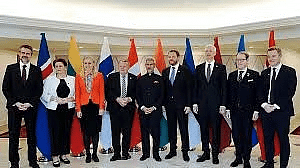
Why in the news?
The eight Nordic-Baltic countries are participating in the Raisina Dialogue in New Delhi together as representatives of the Nordic-Baltic cooperation.
About Nordic-Baltic cooperation
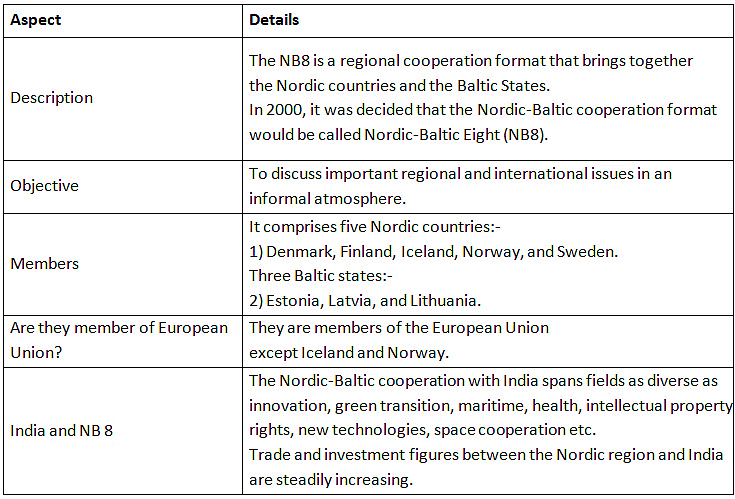
|
164 videos|800 docs|1160 tests
|




















